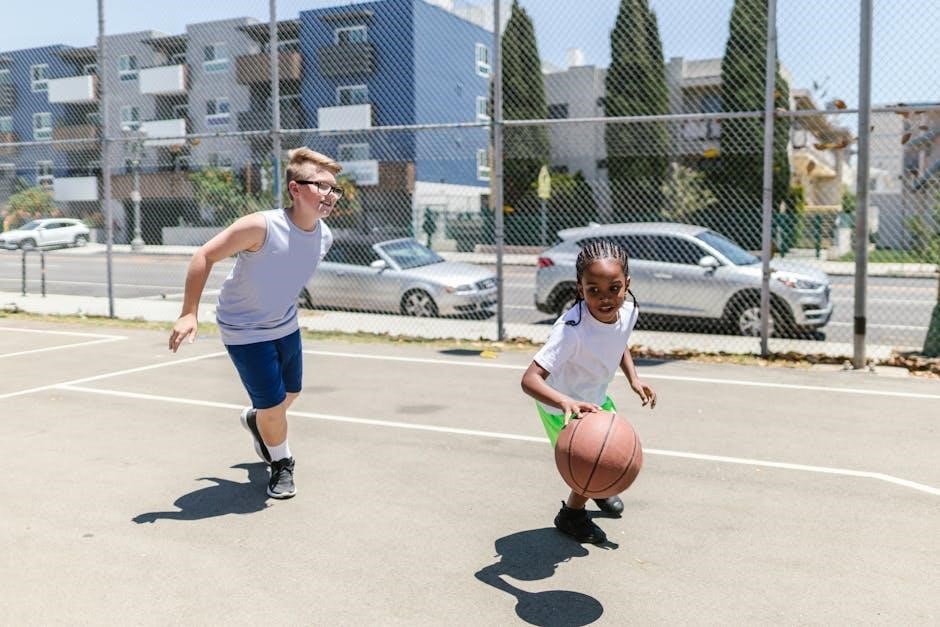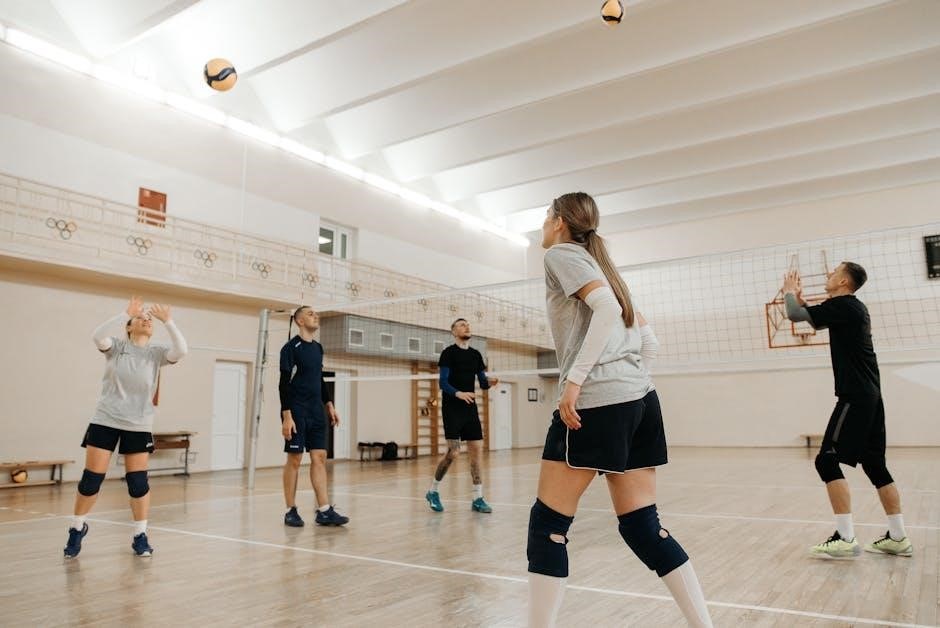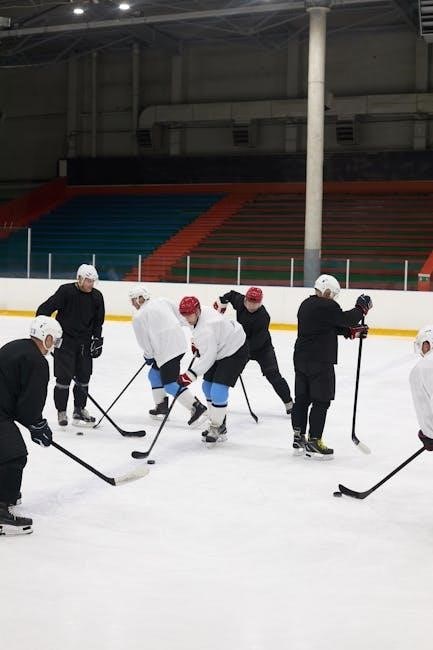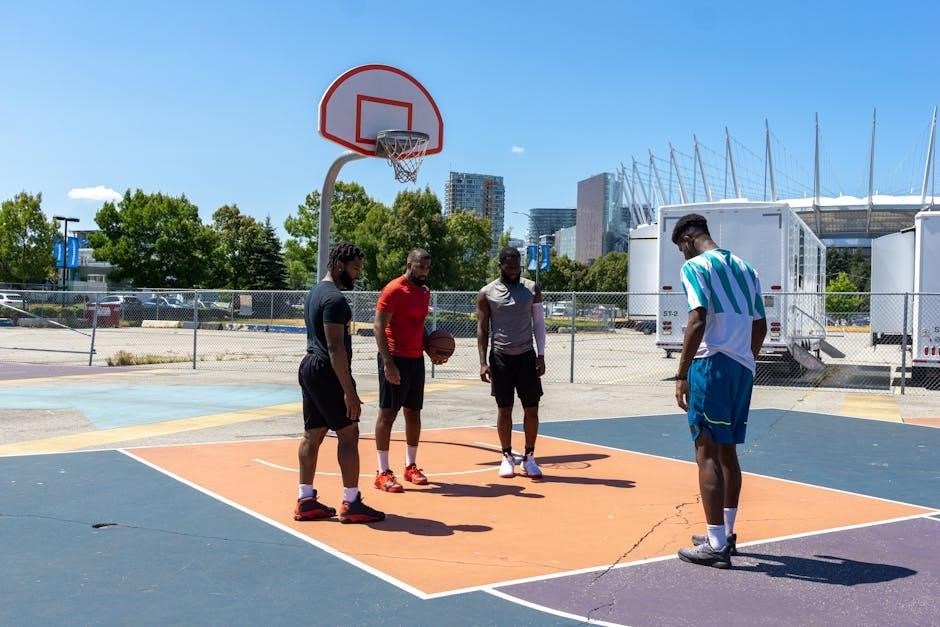Survival Team Building Exercises: An Overview
Survival team building exercises enhance group dynamics, improve problem-solving skills, and foster effective communication.

Classic Survival Scenario Exercises
Classic survival scenario exercises often involve teams facing simulated crises where they must prioritize resources and make critical decisions. These exercises, like the Desert Survival Situation or Lost at Sea scenario, challenge participants to collaborate under pressure. Teams typically receive a scenario description, a list of available items, and the goal of surviving until rescue. They then rank the items in order of importance, justifying their choices through discussion and consensus-building. These activities highlight the importance of communication, problem-solving, and conflict resolution within a group. The exercises promote team synergy by forcing members to rely on each other’s strengths and expertise. Ultimately, these scenarios provide a memorable experience that translates into improved teamwork and decision-making in real-world situations. They’re about building teams capable of navigating any crisis, from a project deadline.

Key Elements of Survival Team Building Activities
Key elements include problem-solving, communication, collaboration, and conflict resolution, essential for effective teamwork and achieving survival goals.
Problem-Solving and Decision-Making
Survival scenarios inherently demand strong problem-solving and decision-making skills. Participants must analyze limited resources, assess risks, and develop creative solutions to overcome challenges. Team members learn to prioritize tasks, evaluate options, and make critical decisions under pressure, mimicking real-world crisis situations. These exercises encourage a systematic approach to problem-solving, where teams identify the core issues, brainstorm potential solutions, and implement the most effective strategies. The ability to quickly adapt to changing circumstances and make sound judgments is crucial for survival, and these activities provide a safe environment to hone these skills. Moreover, the collaborative nature of these exercises ensures that diverse perspectives are considered, leading to more well-rounded and effective solutions. Through trial and error, teams learn to refine their decision-making processes and build confidence in their ability to navigate complex situations. Ultimately, these skills are transferable to various aspects of life, both personal and professional, making individuals more resilient and capable problem-solvers. This also includes the ability to think outside the box.
Communication and Collaboration
Effective communication and collaboration are paramount in survival team building exercises. Participants must clearly articulate their ideas, actively listen to others, and work together towards a common goal. These activities often involve sharing crucial information, coordinating tasks, and leveraging each team member’s strengths. Teams learn to establish clear communication channels and develop strategies for sharing knowledge effectively. Collaboration is fostered through shared challenges, where individuals must rely on each other’s expertise and support to succeed. These exercises emphasize the importance of building trust and creating a supportive environment where team members feel comfortable expressing their opinions and concerns. Constructive feedback is encouraged to improve communication patterns and enhance team performance. Furthermore, participants learn to navigate diverse communication styles and adapt their approach to effectively engage with different personalities. By working together to overcome obstacles, teams develop a strong sense of camaraderie and a shared understanding of the importance of collaborative problem-solving. This collaborative spirit extends beyond the exercise, promoting a more cohesive and productive work environment. Effective communication ensures that everyone is on the same page, leading to better decision-making and a greater likelihood of success. Collaboration also ensures that everyone feels included.
Conflict Resolution
Survival team building exercises often present scenarios that naturally lead to disagreements and conflicts within the team. These conflicts can arise from differing opinions on the best course of action, competition for limited resources, or simply personality clashes. However, these situations provide valuable opportunities for team members to develop and practice conflict resolution skills. Participants learn to identify the root causes of conflict, communicate their perspectives respectfully, and actively listen to opposing viewpoints. The goal is not to avoid conflict altogether, but rather to manage it constructively and find mutually agreeable solutions. Team members are encouraged to explore different approaches to conflict resolution, such as compromise, collaboration, and accommodation. They learn to prioritize the team’s overall objectives and to set aside personal agendas. Effective conflict resolution requires empathy, patience, and a willingness to understand others’ perspectives. Participants also learn the importance of establishing clear ground rules for communication and decision-making. This helps to prevent misunderstandings and ensure that everyone feels heard and valued. By successfully navigating conflicts in a survival scenario, teams develop a greater capacity for handling disagreements in real-world situations. This leads to improved team dynamics, stronger relationships, and a more productive work environment. Learning to resolve conflict effectively builds trust and mutual respect among team members.

Popular Survival Scenario Examples
Explore common survival scenarios like desert survival, lost at sea, and mountain stranding, each testing unique teamwork skills.
Desert Survival Situation
Imagine surviving a plane crash in a desert. The challenge involves ranking salvaged items based on their importance for survival, demanding collaboration and strategic thinking. This exercise fosters team synergy and enhances problem-solving skills under pressure. Teams must prioritize resources, resolve conflicts, and make critical decisions to ensure their survival in the harsh desert environment. This activity promotes understanding of individual roles within a group and encourages effective communication. The desert survival simulation is designed to build new teams, improve team development, and hone essential life skills. Participants learn to navigate crises, manage limited resources, and support each other to overcome adversity. This scenario highlights the importance of teamwork in high-stress situations, demonstrating how collective intelligence can lead to better outcomes. Effective teams are able to leverage each member’s strengths to create a comprehensive survival strategy. The exercise emphasizes adaptability and the ability to make informed decisions with incomplete information. Ultimately, the desert survival situation is a powerful tool for building resilient and cohesive teams capable of tackling any challenge.
Lost at Sea Scenario
The Lost at Sea scenario places participants in a hypothetical situation where they must survive after their ship sinks. Teams are tasked with ranking salvaged items in order of importance to their survival, fostering interaction and teamwork. Success depends on their ability to assess the relative value of each item and reach a consensus as a group. This exercise encourages participants to consider various factors such as food, water, navigation, and signaling for rescue. It also highlights the importance of communication, negotiation, and conflict resolution within a team setting. The scenario challenges individuals to think critically and creatively, leveraging their collective knowledge to make informed decisions. Participants learn to prioritize needs, manage resources effectively, and adapt to unforeseen circumstances. This activity is designed to improve team dynamics, enhance problem-solving skills, and build confidence in decision-making abilities. By working together to overcome the challenges of being lost at sea, teams develop a stronger sense of camaraderie and mutual support. Ultimately, the Lost at Sea scenario provides a memorable and engaging experience that promotes teamwork and resilience. It demonstrates how effective collaboration can increase the chances of survival in a crisis.
Stranded on a Mountain
The Stranded on a Mountain scenario presents a challenging situation where a team must survive in a harsh, mountainous environment after a plane crash. Participants are required to work together to prioritize essential survival tasks such as finding shelter, securing a water source, and signaling for help. The exercise encourages team members to assess their resources, identify individual strengths, and delegate responsibilities effectively. They must make critical decisions under pressure, considering factors such as weather conditions, terrain, and available supplies. Communication, collaboration, and conflict resolution are essential for success in this scenario. Team members must share information, listen to different perspectives, and reach a consensus on the best course of action. The exercise also promotes creative problem-solving, as participants may need to improvise solutions using limited resources; By overcoming the challenges of being stranded on a mountain, teams develop a greater appreciation for teamwork, resilience, and adaptability. The scenario provides a valuable opportunity for individuals to learn about their own strengths and weaknesses, as well as the importance of relying on others for support. Ultimately, the Stranded on a Mountain exercise fosters a stronger sense of camaraderie and shared purpose within the team. It highlights the importance of effective communication and decision-making in high-pressure situations. It demonstrates how teamwork and resourcefulness can increase the chances of survival in a challenging environment.

Benefits of Survival Team Building Exercises
These activities boost team synergy, hone dynamics, and develop crucial life skills through collaborative problem-solving and communication.
Enhancing Team Synergy
Survival team building exercises are designed to unlock the potential of team synergy, making them invaluable tools for group development. Activities like the Desert Survival Situation, widely recognized for its effectiveness, can significantly improve how teams function. By engaging in these exercises, team members learn to collaborate more effectively, leveraging each other’s strengths to overcome challenges. These scenarios create a shared experience that fosters trust and understanding, essential components of a high-performing team. The process encourages individuals to see themselves as part of a cohesive unit, working towards a common goal. Furthermore, survival simulations often require participants to make critical decisions under pressure, forcing them to rely on each other and communicate openly. This shared vulnerability strengthens bonds and promotes a sense of camaraderie. Ultimately, survival team building exercises are not just about surviving a hypothetical situation; they are about building resilient teams capable of navigating any crisis, from project deadlines to complex organizational challenges; The skills acquired during these activities translate directly into improved teamwork and enhanced synergy in the workplace.
Improving Team Dynamics
Survival team building exercises offer a unique platform for improving team dynamics by simulating high-stakes situations that demand effective collaboration and communication. These activities, such as being stranded on a mountain or lost at sea, challenge team members to work together under pressure, fostering a deeper understanding of each other’s strengths and weaknesses. Through shared experiences and problem-solving, teams learn to navigate conflicts, build trust, and appreciate diverse perspectives. The exercises often require participants to prioritize tasks, allocate resources, and make critical decisions collectively, which enhances their ability to function as a cohesive unit. Furthermore, the debriefing sessions following these activities provide valuable opportunities for reflection and feedback, allowing teams to identify areas for improvement and develop strategies for more effective teamwork. By engaging in survival scenarios, team members develop a stronger sense of camaraderie and mutual respect, leading to improved communication, cooperation, and overall team performance. Ultimately, survival team building exercises are not just about escaping a hypothetical predicament; they are about building stronger, more resilient teams capable of tackling any challenge with confidence and unity.
Developing Essential Life Skills
Survival team building exercises are instrumental in developing essential life skills that extend far beyond the workplace. These activities immerse participants in scenarios that necessitate adaptability, resourcefulness, and critical thinking, mirroring real-world challenges. By confronting simulated crises, individuals learn to manage stress, prioritize tasks, and make informed decisions under pressure—skills crucial for navigating personal and professional life. The collaborative nature of these exercises fosters effective communication, active listening, and conflict resolution abilities, enabling participants to build stronger relationships and navigate interpersonal dynamics with greater ease. Moreover, survival scenarios often require participants to step outside their comfort zones, promoting self-confidence and resilience in the face of adversity. The exercises emphasize the importance of teamwork, empathy, and mutual support, encouraging participants to value diverse perspectives and collaborate towards common goals. Through these experiences, individuals develop a heightened sense of self-awareness, problem-solving acumen, and leadership potential. Ultimately, survival team building exercises equip participants with invaluable life skills that empower them to thrive in any environment, fostering personal growth and enhancing their ability to contribute positively to society. The ability to adapt, communicate, and lead are all crucial elements gained.

